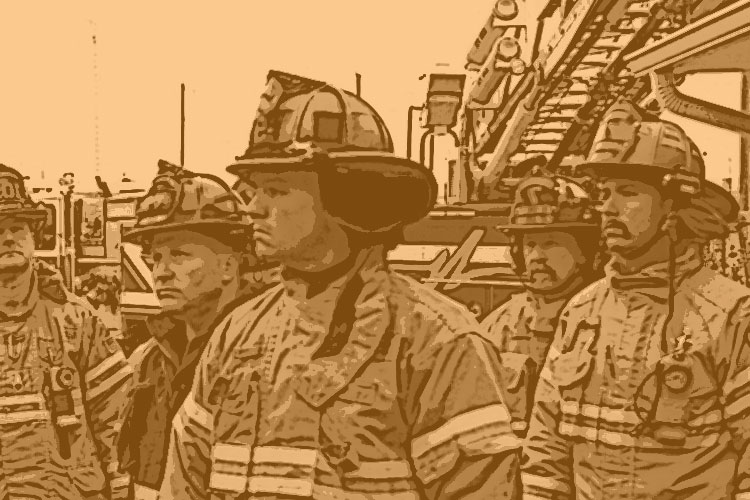

By Grant Coffey
Content via FLIR
Responders face an intimidating variety of incidents, with some having the potential for civilian victims and first responder injury. Natural disasters are relatively infrequent, whereas man-caused terrorism events are difficult to predict. Both scenarios make it difficult for responders to stay prepared.
It is critical to minimize controllable risk. Responders cannot afford to repeat mistakes and must learn from experience to change negative habits. By identifying the root issues that cause bad habits, responders can make positive changes.
It helps to rely on good habits and ingrained muscle memory when under stress. Although modern techniques and equipment are available, it isn’t just about these tools. It’s more about behaviors, how the tools are used to make decisions, and how the interface of these two aspects form habits.
Innovations come quickly and the world around us changes daily. The intersection of modern technology, new threats, and a generational shift presents firefighters and first responders with an opportunity to form good response habits.
Equipment and Technique
How and when you use personal protective equipment (PPE) is more important than new innovations in the gear. Responders rarely respond Code 3 without donning seat belts, but I’ve observed responders commonly conduct overhaul without adequate PPE. Modern equipment encapsulates the user so that risk decision-making becomes even more important. Policy and leadership must teach good situational thinking habits to go along with the use of the gear. Having the gear to prevent unnecessary exposure to carcinogenic overhaul products is one thing, but making the life-saving decision to wear it is another.
Equipment can’t think for you and it can’t bail you out when you get into trouble. The pressure of good decision-making at an emergency, while interpreting readings from a monitor, is real. If not understood and used correctly, monitoring equipment can hinder decision-making and create problems. Responders should be familiar and comfortable with gear to minimize stress, improve decision making, and develop better habits. An example of this is responding to radiation emergencies. Radiation is not well understood and is often feared. Although a monitor is critical, knowledge of what it is telling responders (and even what it isn’t telling them) is essential.
Information overload at an overwhelming scene also causes the responder to regress under stress. If not careful, responders will regress to an ingrained habit that may not be a good habit. My advice is to conduct regular training “one piece at a time.” Slowly master small, routine habits that are manageable and can be built upon. Once mastered, response procedures should become second-nature, allowing responders to focus on the urgent, life-saving tasks at hand.
Finally, our generational landscape is changing rapidly. We are losing a wealth of experience, but also gaining a generation of talented responders who are different in many ways. I believe that it is incumbent upon us to understand those differences and embrace them as part of our strategy of success. There are some basics that can go a long way toward building better team habits. Boomers can use their expertise and competence to educate and mentor GenXers and Millennials, while also involving them and valuing their feedback and unique point of view.
Here are a few tips that may be worth considering:
1. Inoculate with a safety culture: Prioritize the integration of a safety culture into every aspect of training, which will translate directly to emergency scenes and even life at the station. Make a new habit of not cutting corners or taking unnecessary risks.
2. Follow them or change them: If a responder is violating policy, drill down and find out why. Humans go with what works and build bad habits as a result. Update your standard operating procedures (SOPs) so they will be followed. Ensure supervisor enforcement and lead by example, with no tolerance for casual violation, especially at the overhaul scene. This practice must be embraced by everybody from the top to the bottom of the organization.
3. Keep safety simple: Keep procedures simple, use good field guides, and build simple training habits. Use RIO (rule it out), turn it on and put it on (radiation monitor), PRIMED (prepare, recognize, input, monitor, experience, decision), and other easily remembered mantras.
4. Spread the wealth: Wring expertise out of more than just the training officer. Use experienced personnel and special team experts with a train-the-trainer focus to spread the message in an efficient, cost-effective way. Look for opportunities to share best practices and allow each member to contribute to educating the organization.
5. Build a network of experts: Promote multi-agency awareness by interacting with response partners before an incident. Cross train with regional safety officers or at an integrated incident command system (ICS) class. “Outsiders” sometimes can provide the best lessons, improving your situational awareness when dealing with the organizational and cultural differences encountered at a unified scene.
6. Reinforce the basics: Help responders understand their gear. Teach concepts in addition to memorizing techniques. Make a daily habit of covering basic chemical and physical characteristics of common response products, then reinforce it. The psychologist Ebbinghaus coined the concept of the “forgetting curve,” showing that people will forget 90 percent of what they learn in less than a week unless it is reinforced. Tell it, show it, do it, and then review it. Continual practice and preparation is required.
7. Go with the flow: Incidents may be changing, but so is the makeup of our workforce. Embrace generational differences by learning about them, accepting them and using this to build a more effective team. Differences are good, so use them to your advantage. Diversity within a group promotes new ideas and optimization of process and procedure.
Bottom line, we must take responsibility for the habits of our personnel. It’s all about accountability, leadership, and the importance management puts behind the safety of their personnel. Building a culture that develops good habits and ingrained muscle memory when under stress will support positive use of equipment, procedures, and good decision making, thereby protecting and saving lives and livelihood.
 Grant Coffey is a retired Fire & Rescue Hazmat Team Coordinator from Portland, Oregon, College Fire Science Instructor, and CBRNE expert of nearly 40 years. Grant currently hosts CBRNE response training videos online at FLIR.com/PRIMED.
Grant Coffey is a retired Fire & Rescue Hazmat Team Coordinator from Portland, Oregon, College Fire Science Instructor, and CBRNE expert of nearly 40 years. Grant currently hosts CBRNE response training videos online at FLIR.com/PRIMED.
RELATED
FLIR Announces Educational Resource, ‘FLIR PRIMED’ for CBRNE and HAZMAT Responders
Hazmat Technicians Get Hands-On Training at CDP
Response to Critical Incidents A-Z

